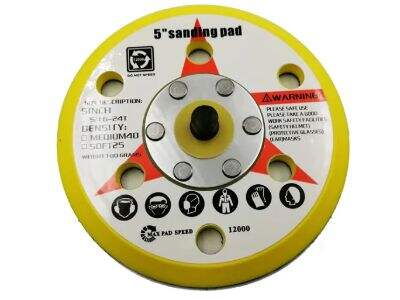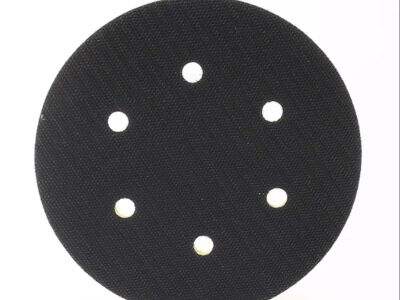Եթե դուք օգտագործում եք RUIHONG-ի պնևմոնիկ սափրիչ, ահա որոշ հաճախ հանդիպող խնդիրներ, որոնք կարող են առաջանալ: Կարող եք օգտագործել այս հոդվածը՝ օդի արտահոսքերը, անհավասար սափրումը և ձայնեղ աշխատանքը լուծելու համար: Այս քայլերը հետևելով՝ կարող եք ձեր սափրիչը հարմար և հեշտ պահել
Օդի արտահոսքերի տեղորոշումը պնևմոնիկ սափրիչում
Օդի արտահոսքերը ձեր արկղագույնի համակարգիչ անարդյունավետ աշխատելով։ Հնարավո՞ր է հայտնաբերել արտահոսքերը։ Բարձրացրեք սա՝ արտահոսքը գտնելու համար, օրինակ՝ լսեք բարձր սուլոցի ձայներ, զգացեք օդի արտահոսքը։ Եթե կարող եք հայտնաբերել արտահոսքերը, բարձրացրեք սանդղակը մինչև ԱՐՏԱՀՈՍՔ։ Լսեք սուլոցի ձայն, զգացեք օդի արտահոսքը միացումներից։ Համոզվեք, որ բոլոր միացումները ամուր են։ Եթե դեռ լսվում է սուլոցի ձայն, օճառային ջուր քսեք խողովակին և միացումներին։ Օդի արտահոսքի տեղում կառաջանան փուչիկներ։ Ամրացրեք կամ փոխարինեք արտահոսք ունեցող բաղադրիչները և փոխարինեք վնասված մասերը։

Օդի ճնշումը կարող է կարգավորվել՝ ապահովելու խորը սափրման համար ճիշտ աշխատանք
Առավելագույն սափրման արդյունավետության համար ճիշտ օդի ճնշումը կարևոր է: Շատ ցածր ճնշում? Սափրիչը չի պտտվի բավարար արագությամբ: Եթե շատ բարձր է, կարող է առաջացնել սափրիչի կամ սափրվող նյութի վերահսկվող շեղում: Կարդացեք արտադրողի սերվիսային ձեռնարկը՝ իմանալու RUIHONG սափրիչի համար խորհուրդ տրված աշխատանքային ճնշումը; օգտագործեք ճնշման չափիչ՝ կարգավորելու ձեր կոմպրեսորը
Ձեր պնևմոնիկ սափրիչի խնամքն ու մաքրությունը հարթ արդյունքների համար
Որքան մաքուր կպահեք ձեր արկղագույնի համակարգիչ , այնքան լավ կաշխատի: Յուրաքանչյուր օգտագործումից հետո սրբեք փոշուց և կեղտից: Ուշադիր նայեք սափրիչին՝ ստուգելու կորուստը, և փոխարինեք, եթե կորած է: Նաև ավելացրեք մի քանի կաթիլ յուղ օդի մուտքի մեջ՝ շարժիչը լավ յուղարվելու համար: Սա այն պարբերական խնամքն է, որը պետք է կատարեք՝ հարթ ավարտաձև ստանալու և ձեր սափրիչի կյանքը երկարաձգելու համար

Սկավառակի ստուգում՝ հարթ սափրման համար ճիշտ կառուցվածքն ու հավասարակշռությունը ապահովելու համար
Սխալ հավասարակշռված կամ չճիշտ դասավորված սանդղաքարը կարող է հանգեցնել անհավասար սանդրման: Համոզվելու, որ դասավորությունը ճիշտ է, անջատեք սանդղապատիկը և համոզվեք, որ սկավառակը կենտրոնացած է: Եթե այն կենտրոնից շեղված է, թուլացրեք սկավառակը, կարգավորեք դիրքը և կրկին ամրացրեք: Միացրեք սանդղապատիկը առավելագույն արագությամբ՝ հավասարակշռությունը ստուգելու համար: Եթե դա այդպես է, հավանաբար սկավառակը հավասարակշռված չէ: Եթե ինչ-որ բան չի աշխատում, կարո՞ղ եք սկավառակը տեղադրել այլ դիրքով կամ փոխարինել այն
Վիբրացիան և ձայները պնևմոնիկ սանդղաքարերում
Եթե երբեք օգտագործել եք արկղագույնի համակարգիչ , գիտեք, թե ինչպես կարող են վիբրացիան ու ձայնը ամբողջովին խենթացնել ձեզ: Սովորաբար դրա պատճառը ասիմետրիկ սկավառակն է կամ լողացող մասերը: Ստուգեք սկավառակի հավասարակշռությունը՝ վերը նշվածի համաձայն: Եվ, եթե այդպիսին կան, ամրացրեք որևէ ազատ պտուտակներ կամ միացումներ: Եթե խնդիրը պահպանվում է, սանդղապատիկի ներքին մասերը կարող են մաշված լինել և պահանջել մասնագիտացված վերանորոգում
Օգտագործելով այս խափանման հայտնաբերման ուղեցույցը՝ կարողանալու եք նույնականացնել և վերացնել RUIHONG պնևմատիկ սանդղակի ամենատարածված խնդիրները և շատ փոքր դադարի հետ վերադառնալ աշխատանքի
Բովանդակության աղյուսակ
- Օդի արտահոսքերի տեղորոշումը պնևմոնիկ սափրիչում
- Օդի ճնշումը կարող է կարգավորվել՝ ապահովելու խորը սափրման համար ճիշտ աշխատանք
- Ձեր պնևմոնիկ սափրիչի խնամքն ու մաքրությունը հարթ արդյունքների համար
- Սկավառակի ստուգում՝ հարթ սափրման համար ճիշտ կառուցվածքն ու հավասարակշռությունը ապահովելու համար
- Վիբրացիան և ձայները պնևմոնիկ սանդղաքարերում
 EN
EN
 AR
AR
 BG
BG
 CS
CS
 DA
DA
 NL
NL
 FI
FI
 FR
FR
 DE
DE
 EL
EL
 HI
HI
 IT
IT
 JA
JA
 KO
KO
 NO
NO
 PL
PL
 PT
PT
 RU
RU
 ES
ES
 SV
SV
 TL
TL
 ID
ID
 LV
LV
 LT
LT
 SR
SR
 VI
VI
 HU
HU
 MT
MT
 TH
TH
 TR
TR
 FA
FA
 AF
AF
 MS
MS
 GA
GA
 CY
CY
 BE
BE
 IS
IS
 HY
HY
 BN
BN
 LO
LO

